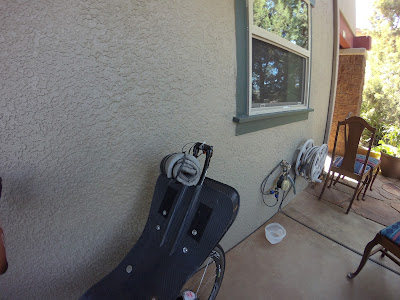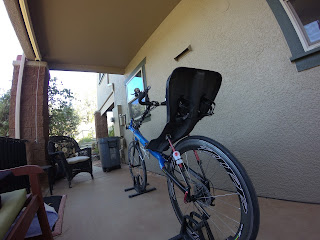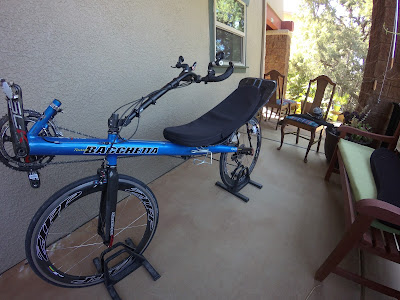I'll be 70 in 7 weeks. My eighth decade. Training is important for reasons greater than just performance goals on the bike.
I have a LeMond Revolution trainer.
I've had it for several years now and it is without question the best trainer for me. This LINK refers you to the manufacturer where you can find information on the features and benefits of the device.
I haven't found an indoor training plan or system that allows me to get a strong workout without making me want to avoid doing it too often. I'm not alone in having a `hate-hate' relationship with indoor training. There are, of course, various `spin' classes to which I could go but they're not recumbent focused. And I just don't want to go to `classes.'
Power Meter: Despite my aversion to indoor training I realize that with a power meter and High Intensity Training (Joe Friel) I can get more benefit without the long, grinding hours. So, the folks at LeMond have recently developed a device that I can put on my LeMond Revolution that is, in fact, a power meter. The Wattbox. I pre-ordered it last October expecting to have it for the cold, dark and bleak winter months. They said I'd get it by Christmas.
Christmas came and went. No Wattbox. Turns out they changed the date when I can expect it to ... March 1st. AFTER the months when I most need it.
So .. how can I stay motivated and still do strong, high intensity training without a power meter? The answer: I can't. There is no substitute for the kind of training recommended by Joe Friel in his book Fast After Fifty.
Heart Rate: Without a power meter to precisely measure the `outcome' of my effort I am reduced to a very fuzzy measure: heart rate. Heart rate is not a good measure for many reasons. It is slow to respond. And I have a very low heart rate in particular (my morning heart rate is typically in the mid-40 beats per minute range).
Heart rate training is `input' based. I have several workout `scripts' that have me doing intervals. Two minutes of `hard' pedaling. Easy pedal for a minute. Stuff like that. I hate doing it. Which means that I avoid it.
Music: Podrunner. Rather than divert attention to the originator and brainiac of Podrunner, Steve Boyett, I'll focus on what it does for my training.
Today I wanted a strong 75 minute workout on the LeMond Revolution trainer. I downloaded the Podrunner Interval Training music (60 minutes of `ladders' music). The MUSIC starts at 150 beats per minute and it increases every 10 minutes by 5 beats until it reaches 180 beats per minute.
My pedaling is typically 95 rpm. My heart rate rarely goes past 150 bpm. My max HR is probably in the early 170 bpm range, though I very rarely do that.
My pedaling is typically 95 rpm. My heart rate rarely goes past 150 bpm. My max HR is probably in the early 170 bpm range, though I very rarely do that.
The music is very entertaining, making the workout actually enjoyable. My heart rate moves easily into the anaerobic range. Though I may not be pushing massive watts I am most definitely improving my pedaling RPM, my pedaling form and my endurance capacity.
Most importantly I look forward to the training. It enables me to maintain consistency and work on endurance at Tempo and better pacing.




















































